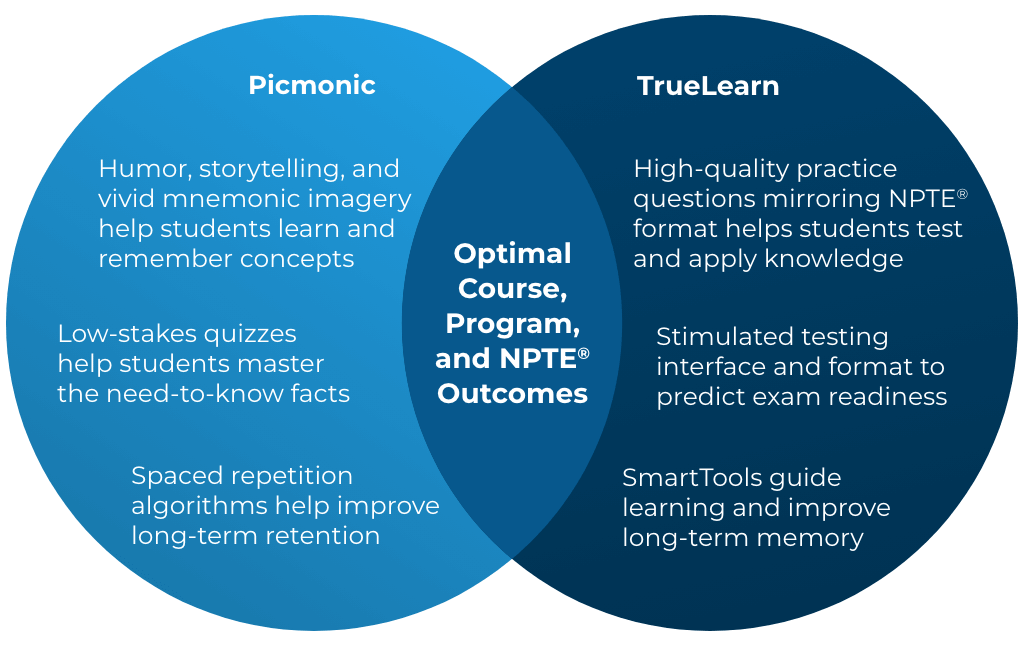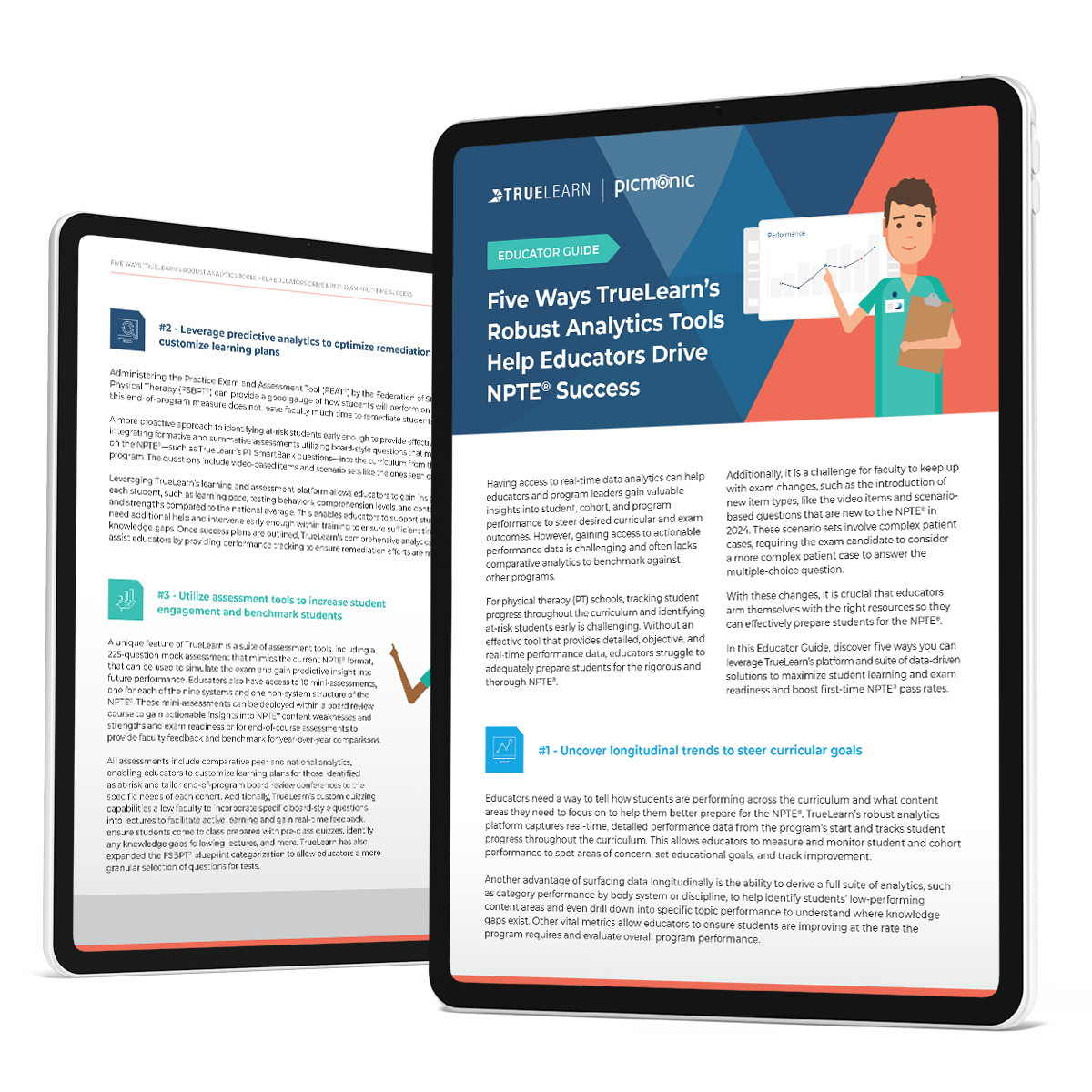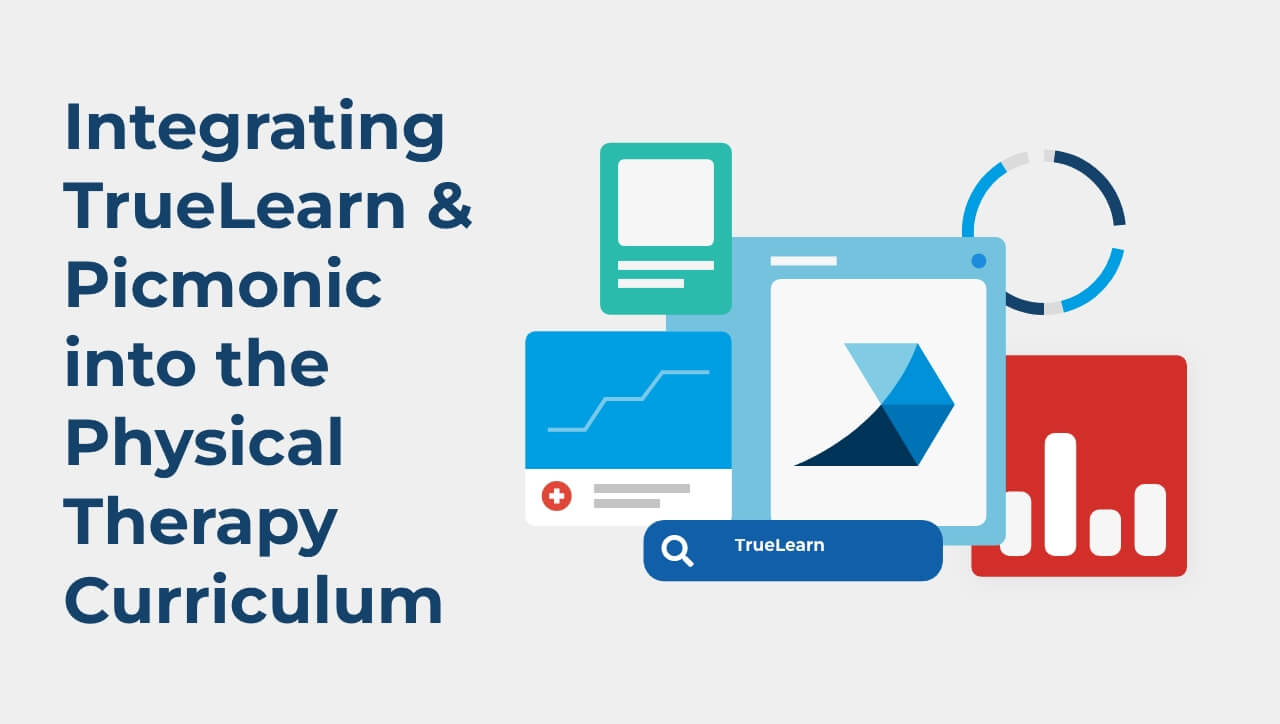Predictive Analytics and Robust Data are the Ultimate Physical Therapy Educator Resources

Physical therapy (PT) programs face ongoing pressure to ensure students are fully prepared, not only in foundational knowledge but also in clinical reasoning and test-taking strategy. As expectations for competency rise, so does the demand for tools that help students develop the critical thinking skills required for licensure and professional practice.
To improve first-time pass rates, physical therapy educators are seeking more effective, data-driven education resources. Physical therapy programs need solutions that not only deliver content but also provide real-time insights into student performance, support early intervention, and align closely with NPTE® exam expectations.
Traditional end-of-program assessments often arrive too late to make a meaningful impact. What’s needed is a longitudinal approach, one that tracks performance over time and empowers faculty with the tools to act early and with precision.
In this blog, we examine:
- What the research says about academic indicators that predict NPTE® performance
- How TrueLearn supports PT educators with analytics and tools that align to curriculum goals and surface actionable insights
- Six benefits of integrating TrueLearn and Picmonic into the PT curriculum to enhance instruction, target remediation, and support exam readiness
What the Research Says About Predicting NPTE® Performance
Driving higher first-time NPTE® pass rates starts with understanding how students are progressing throughout the program, rather than waiting to assess performance at the end. It calls for early, ongoing insight into academic performance to surface risk indicators before they impact final outcomes.
Research shows that tracking key academic metrics over time can help educators identify which students are on track and which may need additional support long before final assessments begin.
A study by Trine University explored how academic performance measures could predict first-time NPTE® outcomes. The study found that prerequisite GPA, GPA in basic science courses, and comprehensive exam scores were the most reliable indicators, together predicting 81.1% of outcomes.
While the model accurately forecasted passing scores 96.7% of the time, it was less effective in identifying those at risk of failure, highlighting the need for more nuanced, data-driven support strategies.
In another study, researchers examined student outcomes in a blended PT program and found that both early and in-program academic performance—particularly exam scores and GPA—accounted for a significant portion of NPTE® results. Even when later-stage variables were excluded, early indicators alone explained nearly 30% of the variance in outcomes.1
Across both studies, the findings point to a clear takeaway: tracking student performance longitudinally enables earlier intervention, more targeted support, and stronger NPTE® readiness across cohorts.
How TrueLearn Supports PT Educators
To close performance gaps and better prepare students for the NPTE®, PT programs need access to real-time, objective data that reveals how students are progressing across key milestones. Today’s physical therapy education resources shouldn’t just support instruction — they should enhance it with real-time insights that empower educators to act with precision.
TrueLearn offers a purpose-built platform that combines curriculum-aligned assessments with predictive analytics. Faculty can deploy board-style questions, quizzes, and full-length mock exams aligned to the latest NPTE® blueprint. These tools provide actionable insights into individual and cohort-level performance, helping educators quickly identify knowledge gaps, surface at-risk students, and tailor instruction accordingly.
The impact is measurable. PT students using TrueLearn have demonstrated a 22.83% improvement in exam bank performance, highlighting the platform’s effectiveness in promoting long-term retention and exam readiness. TrueLearn also supports longitudinal performance tracking, giving programs a comprehensive view of student progress over time and enabling earlier, more strategic intervention.
By integrating TrueLearn into their physical therapy curriculum, educators gain access to the kind of education resources physical therapy programs increasingly depend on to strengthen academic performance and improve NPTE® outcomes.
Is your PT program equipped to identify and support at-risk students before it’s too late? Discover how leading Physical Therapy programs are using TrueLearn’s data-powered platform to improve licensure outcomes, personalize remediation, and align curriculum with the NPTE® blueprint.
Six Ways to Strengthen PT Education with TrueLearn and Picmonic
With these capabilities in place, TrueLearn becomes more than a test prep solution—it becomes an integral part of the curriculum. When paired with Picmonic, it offers a comprehensive approach to supporting learning, enhancing instruction, and building long-term content mastery.
Here are six key benefits of integrating both TrueLearn and Picmonic into your physical therapy curriculum:
Sharpens Classroom Instruction
TrueLearn and Picmonic promote active, engaging learning by integrating seamlessly into existing coursework. Picmonic’s visual mnemonics can be assigned as pre-lecture material, while TrueLearn’s board-style quizzes reinforce concepts during class and provide real-time feedback—allowing faculty to clarify misunderstandings or advance more quickly through mastered content.

Identifies Weak Subject Areas
Both platforms generate performance data that surface content gaps at the individual and cohort level. This helps educators guide targeted remediation, monitor progress, and adjust instruction based on real-time insights.
Predicts NPTE® Outcomes
TrueLearn’s high-quality, exam-aligned questions, mock assessments, and benchmarking tools give programs early visibility into NPTE® readiness, making it easier to identify trends, forecast performance, and prepare students strategically across the academic cycle.
Strengthens Student Self-Assessment
Students gain immediate insight into their strengths, weaknesses, and learning progress. Real-time feedback and adaptive tools across both platforms empower them to take ownership of their preparation and focus their efforts where it matters most.
Reduces the Need for Remediation
By reinforcing content through active recall and spaced repetition, TrueLearn and Picmonic help students achieve deeper understanding and longer-term retention, minimizing the need for intensive post-assessment remediation.
Optimizes Academic Hours
By reinforcing content through active recall and spaced repetition, TrueLearn and Picmonic help students With ready-to-use quizzes, content-aligned video lessons, and spaced review tools, educators can spend less time on lesson planning and more time on clinical reasoning and higher-order instruction. Students, in turn, reinforce key material independently maximizing every hour of the learning experience.
Preparing PT students for NPTE® success requires more than content mastery—it takes a strategic, data-driven approach that supports learning from day one. By integrating platforms like TrueLearn and Picmonic into the curriculum, educators gain the tools to monitor progress, personalize instruction, and help students build the knowledge and confidence they need to succeed.
References & Footnotes
1 Lazinski MJ, Rockefeller K, Cheng MS. Predictors of National Physical Therapy Examination failure in graduates of a blended Doctor of Physical Therapy program. J Phys Ther Educ. 2023;37(1):52-59. doi:10.1097/JTE.0000000000000257
*NPTE® is a trademark of the Federation of State Boards of Physical Therapy (FSBPT®).
This content is not endorsed or approved by the Federation of State Boards of Physical Therapy (FSBPT®)



